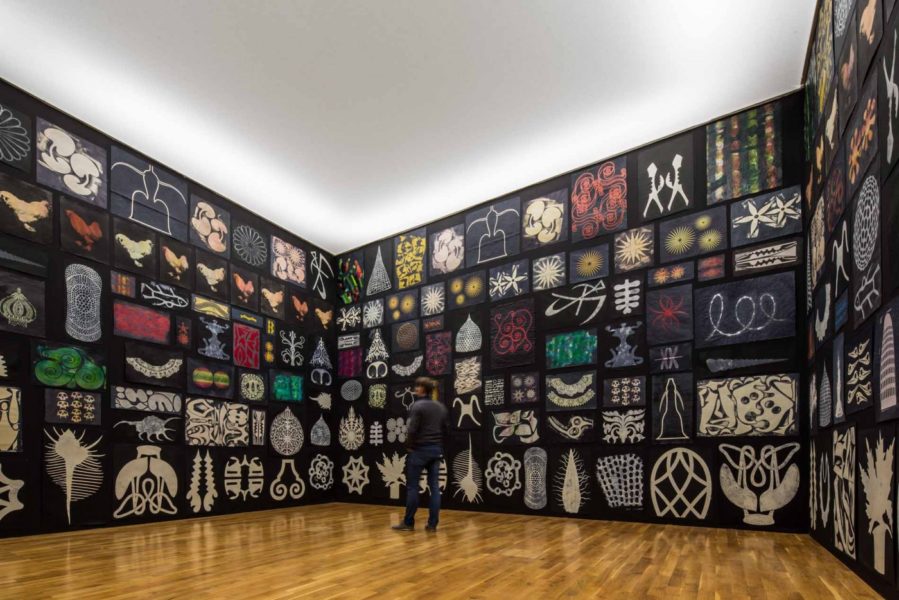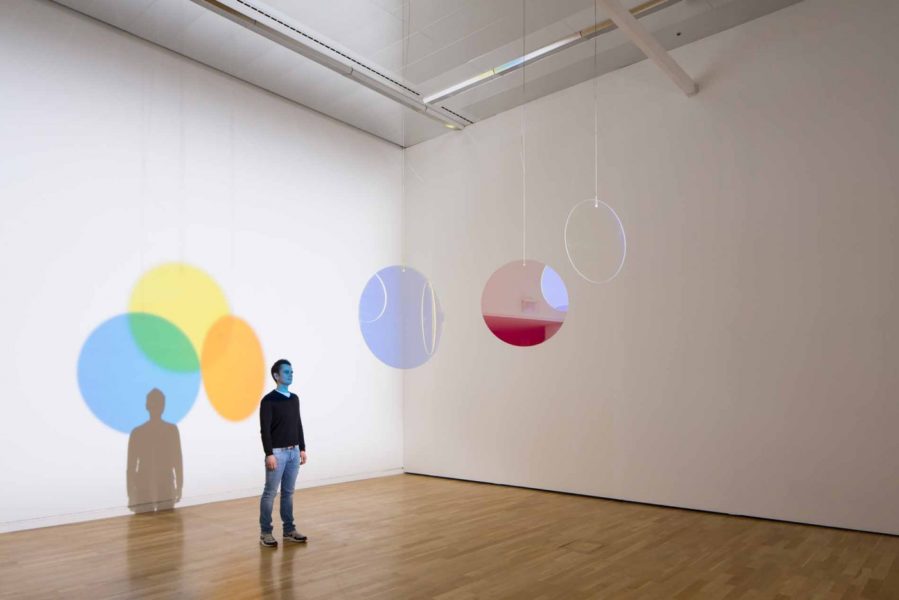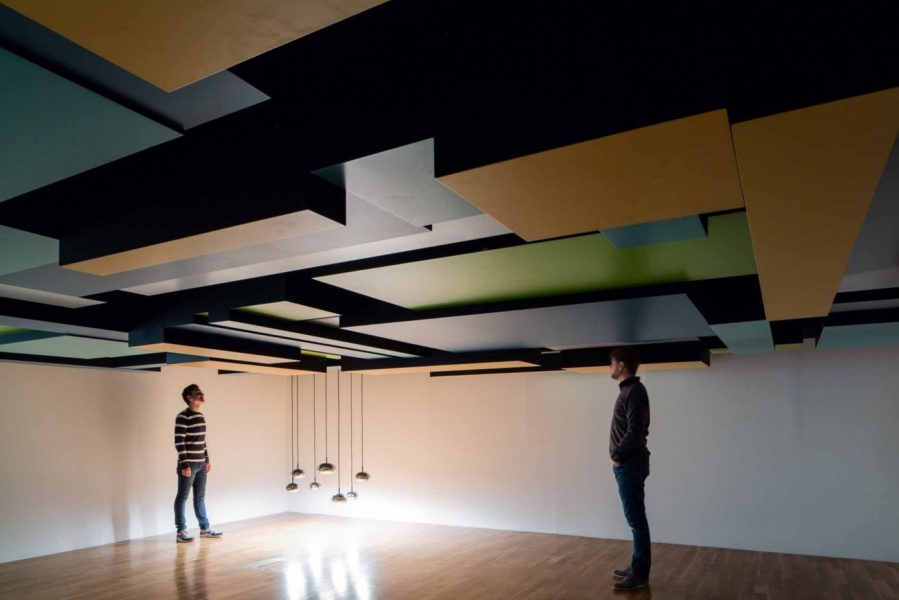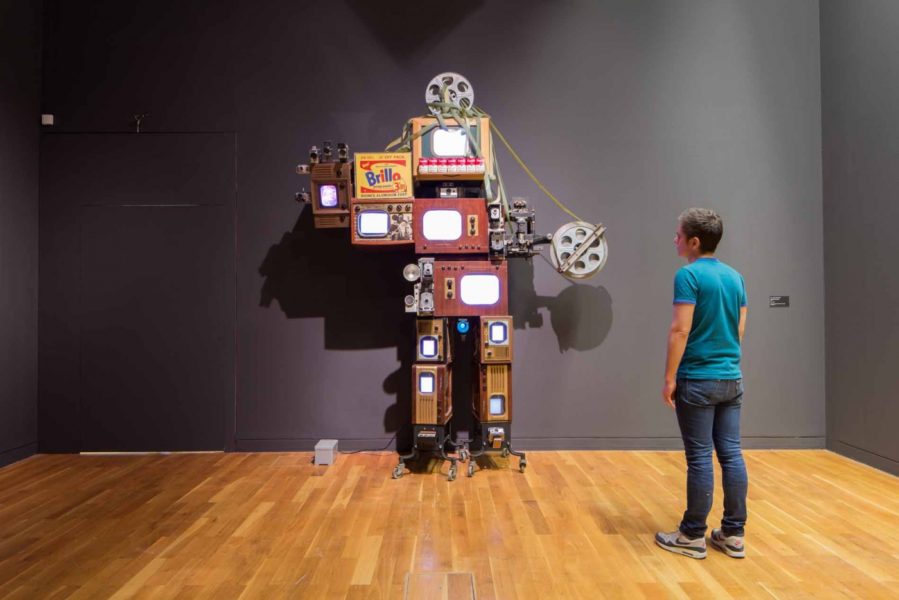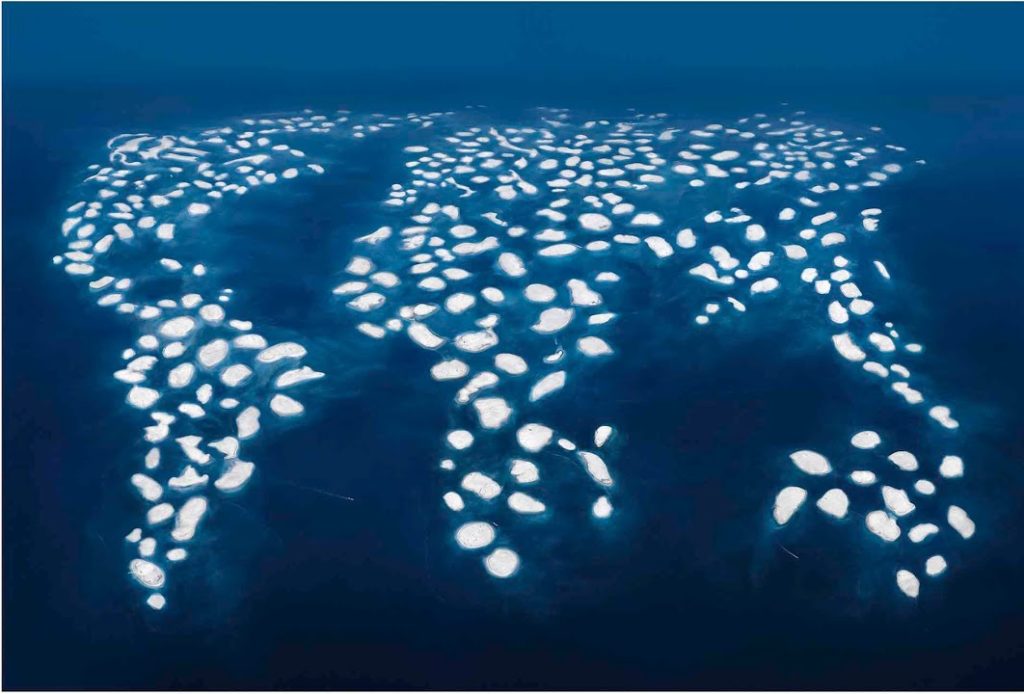Traces of Modernism
Installationviews
Info
The Kunstmuseum Wolfsburg is celebrating its 20th anniversary in 2014 with a large-scale Kokoschka exhibition, but is it also taking the opportunity to conduct special thematic explorations and is setting off in search of traces in its own collection. The museum has been collecting international contemporary art with emphases on Minimal Art, Conceptual Art, Arte Povera, Body Art and Media Art since 1994. The collection presentation “Traces of Modernism” will be shown on an exhibition area encompassing circa 1000 square meters on the museum’s upper gallery spaces.
“What looks good today may not look good tomorrow” is the title and content of a piece by Michel Majerus from 1999 in which he aptly encapsulated what Charles Baudelaire already described in 1863 when he coined the term modernity as an expression of the zeitgeist: It is transient and fleeting. It is difficult to comprehend the time scale of modernism—but some of its determinative contents and aesthetics are irrefutable. The question concerning the current influence of modernism will be posed in a thematically structured parcours combining the areas of portraiture, representational painting, abstraction, architecture and design, science and technology, enlightenment and spirituality as well as global art. What does the reception of modernism look like in the works of such artists as Julius Popp, Elizabeth Peyton, Thomas Schütte, Cindy Sherman, Nam June Paik, Neo Rauch, Jeppe Hein, Jan Dibbets, John M Armleder, Tony Cragg, Gary Hume, Tobias Rehberger, Andreas Gursky, Philip Taaffe, Olafur Eliasson, Rebecca Horn, Gerhard Merz, Ola Kolehmainen and James Turrell?
Today, in the Age of Globalization, everything seems possible. Our present-day world hardly knows boundaries any longer. A simple mouse click or touch of a touchscreen connects us virtually with other countries, time zones and cultures—we visually take part in the lives of others via Skype and can be at two places simultaneously. The communications theoretician Marshall McLuhan early on coined a term to describe this development—the Global Village. Actual distances will first become tangible again when non-European societies boast cultural and aesthetic cravings for recognition that differ from Western notions. The contours of modernism in the Western sense seem to be dissolving.
The cultural interactions in this Global Village give rise to new questions about modernism that also concern its currency within its original Western context. Pluralism has not only taken hold of art in the 21st century but also forms of society and government, lifestyles and religious orientations. Is not modernism’s idea in fact outdated against this backdrop? What has happened to the unshakable belief in progress, the fascination in science and technology, the cultural desire for reform and art’s formal innovations and shifts in perspective? The advances made by scientific research corresponded to the aesthetic revolution in 20th-century classic modern art. Abstraction asserted itself up to the point of freeing form from the object and color from form.
While attempts to distance themselves from these innovations are still noticeable among post-modernists, artists from the latter half of the 20th and the 21st century renegotiated such modernist styles as Cubism (e.g. Jan Dibbets), Constructivism (e.g. Tony Cragg), Surrealism (e.g. Neo Rauch) and color field painting (e.g. Joseph Marioni, James Turrell). An attraction to science and technology is likewise reflected in the example of the artist-engineer (e.g. Panamarenko, Nam June Paik, Julius Popp) or in the staging of natural phenomena (e.g. Olafur Eliasson). The exhibition encapsulates such relationships and elected affinities.
With this exhibition concept, the Kunstmuseum Wolfsburg is continuing the equally scholarly and sensual expedition that it has been on since 2006 and which is probably unique in the international museum scene: The Pursuit of Modernism in the 21st Century. This question has been the constant starting point for all of the museum’s investigations, particularly for such thematic exhibitions as “The Art of Deceleration”, “Art & Textile” and “Interior/Exterior”.
In this context, the Kunstmuseum will publish its findings concerning the Future of Modernism in the 21st Century with texts by renowned authors from the fields of art, art history, philosophy, architecture, sociology and cultural studies in the fall of 2014.
Artists
John Armleder, Richard Artschwager, Hussein Chalayan, Tony Cragg, Jan Dibbets, Olafur Eliasson, Helmut Federle, Andreas Gursky, Jeppe Hein, Georg Herold, Rebecca Horn, Gary Hume, Sergej Jensen, Anselm Kiefer, Ola Kolehmainen, Michel Majerus, Joseph Marioni, Gerhard Merz, Nam June Paik, Panamarenko, Elizabeth Peyton, Julius Popp, Neo Rauch, Tobias Rehberger, Thomas Schütte, Cindy Sherman, Beat Streuli, Philip Taaffe, James Turrell, Luc Tuymans
